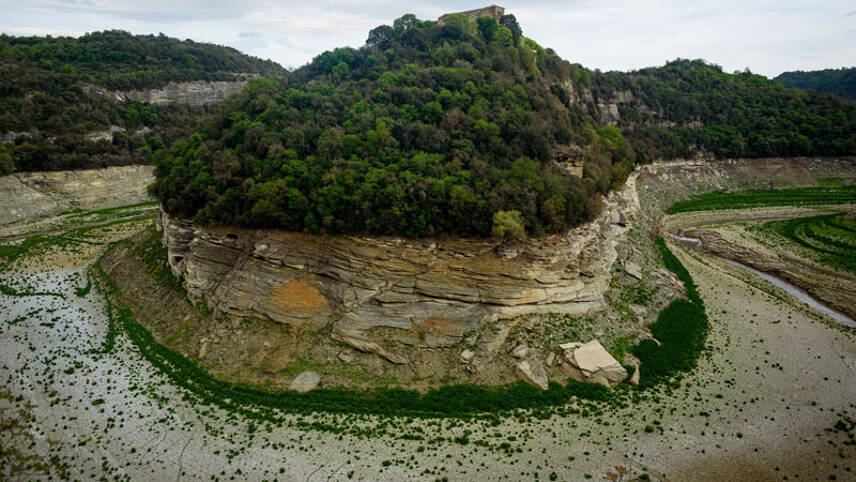Register for free and continue reading
Join our growing army of changemakers and get unlimited access to our premium content

Pictured: Drought impacting the Ter River, Spain, in 2023
The body’s flagship annual report on global economic prospects, published late last week, predicts 2.4% global GDP growth this calendar year, down from 2.7% in 2024.
Causes are multifaceted including slow pandemic recoveries in developing economies and live conflicts in regions including the Middle East and Russia-Ukraine. Recent climate-related damages and imminent climate-linked risks are also highlighted.
In his foreword to the report, UN Secretary-General Antonio Guterres warns that “divisions between countries and economies are preventing an effective response” to some of the world’s biggest interconnected crises, including climate change, environmental degradation, increasing poverty and unequal access to nutritious and affordable foods.
Rising energy and commodity prices, compounded with two summers of record-breaking extreme weather, forced up food prices across the world in 2022 and 2023, the report outlines. This, in turn, has impacted quality of life.
Last year, extreme weather events included ‘monster’ flooding Thesally, Greece, often described as the nation’s breadbasket; July heatwaves across North America, Europe and China; and April-May heatwaves across Asia that hit rice production significantly.
The UN foresees prices remaining generally high into 2024. They are likely to remain particularly high for longer in Africa, South Asia and Western Asia.
Prolonged droughts in the Horn of Africa are unlikely to ease significantly this year according to the UN’s predictions.
The body also believes parts of Asia are likely to once again experience unusually early and intense heatwaves this year, as they did in 2023. Flooding may well follow, as was seen in Pakistan in 2022. Rice is a commodity at significant risk of decreased output.
Looking to the latter half of the year, the UN’s report assesses the likely impact of the El Nino event which began in late 2023 and is set to continue through to spring. El Nino is a warming of the surface waters of the Pacific which, in turn, can cause a host of changes to ocean ecosystem conditions. These events are becoming more frequent and intense due to global warming.
Beyond potentially severely disrupted fishing in South America, Central America and the Asia-Pacific region, the UN expects El Nino to “ affect precipitation patterns in many Asian countries, causing extreme droughts or floods and consequently impacting agricultural output”.
“These shocks are expected to be disproportionately severe in countries where agriculture accounts for the largest share of GDP,” the report elaborates.
Its overarching warning is that “the unfolding climate crisis and extreme weather events will undermine agricultural output and tourism” in 2024.
Scaling climate finance
The report strongly reiterates the UN’s existing research into the yawing finance gaps surrounding the delivery of the Sustainable Development Goals (SDGs).
As well as investing to prevent future climate risks, finance flows need to rapidly scale to adapt to risks already baked in. The UN recently warned that current annual levels of international climate adaptation funding could need to increase 18 times over, to reach $387bn in 2030.
As well as scaling the levels of funding, the types of funding and the nature of contracts will need to change, the UN is warning. Many developing nations are already in debt and land themselves in more through only being able to access loans – not grants – for climate finance. Multilateral development bank reform will be a crucial component to addressing this challenge.
Compensating communities for past climate losses and damages is another focus area of the UN’s report.
At COP28 in Dubai last month, nations agreed to operationalise the world’s first loss and damage fund. At-risk nations had been lobbying for such a fund for decades but came up against opposition from the likes of the US and EU until a compromise was reached at COP27 in 2022.
The fund will initially be hosted by the World Bank. It has received preliminary funding pledges exceeding $750m. Contributors include the UAE, UK, Germany, France, Italy, Japan and the US.
Rows continue over which nations should be allowed to draw from the fund, with China proving to be a key sticking point to unlocking additional payments in from the likes of the US.


Please login or Register to leave a comment.